National Trust
An H-shaped house built in the reign of Charles II (1685-7) sits in a wooded park, with gardens. The interior furnishings and fittings are of high quality and include collections of silver and porcelain. Delicate and intricate woodcarvings surround pictures and frame doors, and there are superb plaster ceilings in several of the principal rooms. Nineteenth-century formal gardens are laid out to the north of the house. The well-known architect James Wyatt carried out alterations to four principal rooms, and the exterior, in the late 18th century.
All photos were taken during my second visit in Sept 2022. It was raining so I was not able to visit the gardens.
The house and grounds are impressive and well worth a visit.
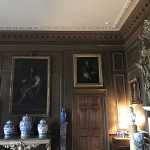
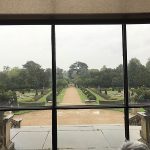
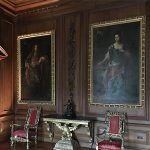
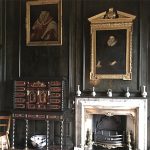
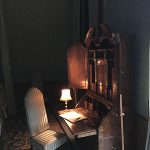
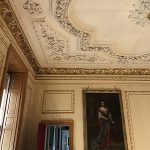
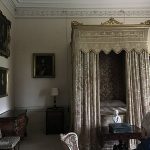
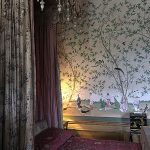
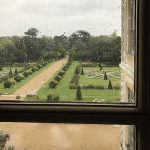
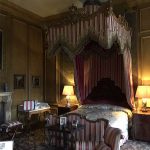
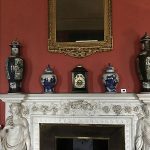
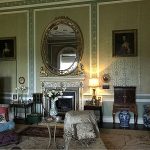
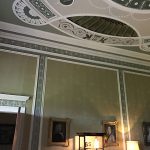
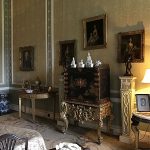
Category: National Trust
Barrington Court, Somerset
National Trust
This mid-sixteenth century house has a spiky outline of gables and chimneys and is built to a characteristic Elizabethan E-plan. Barrington was the first country house to be acquired by the National Trust, and it could be said that the NT has learnt by its mistakes. Ever since, the NT has been wary of accepting a house without a substantial endowment to provide for its upkeep. Barrington came to the NT as a derelict gutted shell with few original internal features remaining. Its present authentic-looking internal appearance is due to the sympathetic attention of an early tenant, Colonel A Lyle (of sugar fame) who lined it with his collection of interior fittings salvaged from contemporary derelict buildings. Every house seller knows that a house looks better with the rooms kitted out with furniture and fittings, and today Barrington is leased to Stuart Interiors for the display of period and reproduction fine furniture.
Today, the rooms, including the gallery on the top floor, make an interesting visit. The house exterior is attractive, and surrounded by lawns, a partial moat and gardens.
Wimpole Hall & Estate, Cambs.
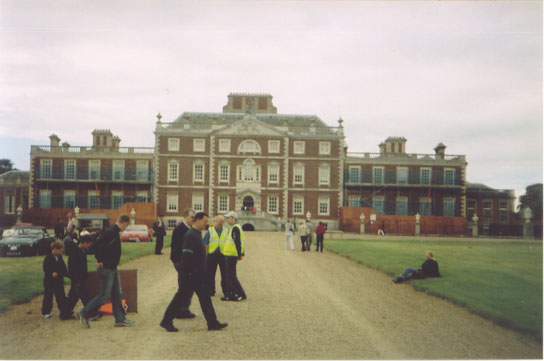
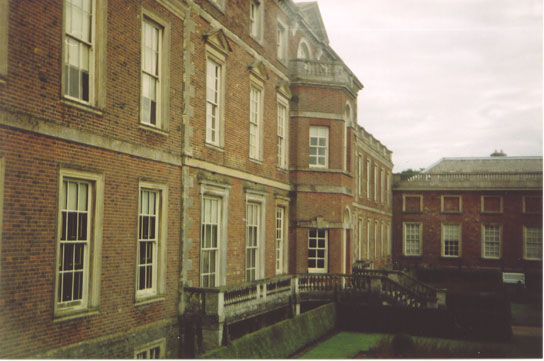
Castle Drogo, Devon
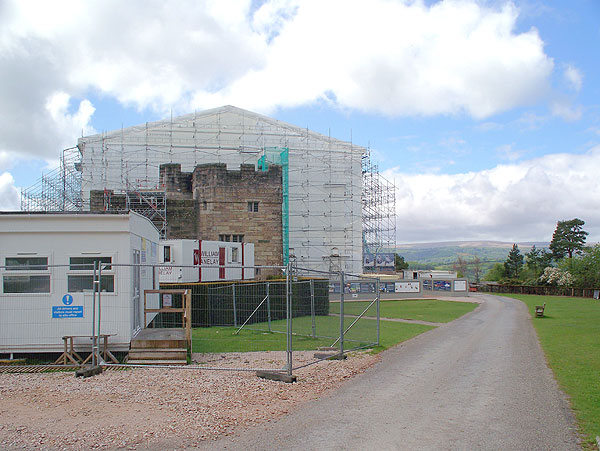 National Trust
National Trust
The castle, built of granite, is in fact a fairly modern construction, designed by Edwyn Lutyens for Julius Drewe, a self-made millionaire and owner of Home and Colonial Stores. It was built between 1910 and 1930.
Inside, there are 1930’s style baronial interiors and family keepsakes. Outside, the house is dramatically sited on high ground overlooking a steep valley. There is a garden, and there are walks along the edge of the gorge.
The house suffers from water penetration, mainly through the flat roofs, whose unconventional asphalt topping was not a success. A further £11 million effort is being launched to fix the intractable leak problem. [£11m! No wonder people are reluctant to buy homes of non-traditional design 🙂 ]
Road access is steep, narrow and bendy.
Revisited May 2015: The roof repair is under way, and large amounts of granite have been removed from roofs and parapets to give access to the failing asphalt. The numerous windows are also being refurbished and given modern sealants. The interior has been cleared of vulnerable contents and access is limited. Some of the accessible rooms contain elements of a special modern art exhibition.
There is a viewing platform on top of the scaffolding giving a view of the roof, but I was not able to go up because of poor weather. However you can get some idea of what is being done by peering out of windows during your tour.
Revisited April 2017. Restoration continuing – first half completed and scaffolding moved to second section. Went up scaffolding for roof visit and view of light wells over kitchen.
The formal gardens are unaffected by the building works, and worth a visit as you return from the castle.
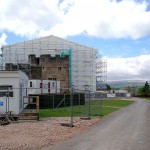
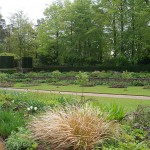
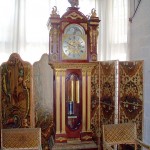
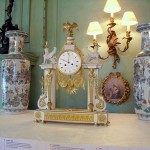
Tyntesfield, Somerset
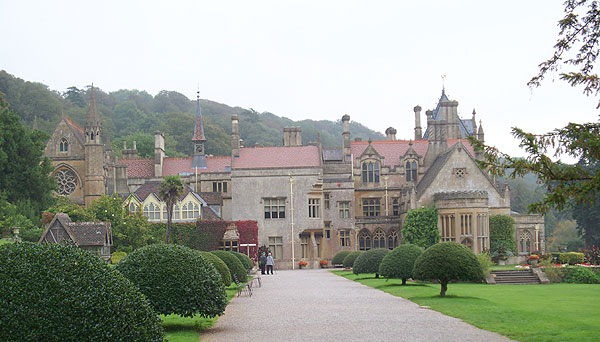
National Trust
An impressive Victorian estate and one of the NT’s more high-profile acquisitions, Tyntesfield is deep in the Somerset countryside. Besides the house and chapel there are gardens and miscellaneous out-buildings, with the inevitable restaurant, shop, café and visitor centre. When acquired, the house was a time-warp and stuffed with period objects. When I visited, the formal rooms were quite impressive, and the service and other rooms that were opened were full of miscellaneous stuff. The Chapel is next to the house but had a separate entrance, which was also used to give access to some rooms in the upper part of the house.
Update: Sept 2014.
Since my last visit, the NT visitor’s entrance has been moved to the service yard, a few more formal and service rooms have been opened on the ground floor, and the upper floor has been opened for visitors. The tour now exits via the Chapel. (My old guidebook shows the Billiard Room, Mrs Gibbs’ Room, and the Old Servants’ Hall as accessible, but they are not on the 2014 tour.)
The central hall, Library, Dining room and Drawing Room are impressively decorated in Victorian style and fully furnished.
Upstairs, approx ten rooms can be visited. These are less impressive than the downstairs rooms, but still interesting, and some are still filled with undisplayed stuff.
The Chapel is the size of a smaller church, and an impressive and colourful example of Victoriana.
In the house, it’s amusing to note that an analog Mitsubishi TV belonging to the last owner has become a NT exhibit. 🙂
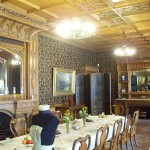
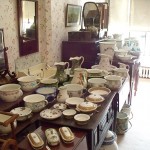
Ascott, Bucks
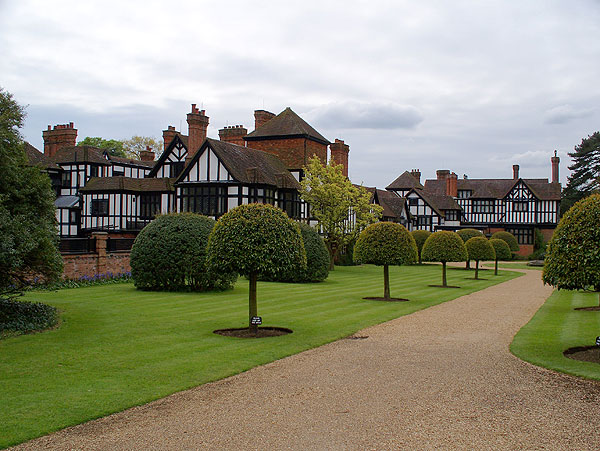 National Trust
National Trust
This is one of the NT properties nearest to my house, but prior to May 2012, I’d only been there twice in 27 years. The building was a Jacobean farmhouse remodelled towards the end of the 19th century for the de Rothschilds. Inside is a collection of paintings, fine furniture and porcelain. Outside are gardens.
Ascott is perhaps of more specialist interest than some of the other NT properties. The house, which looks Tudor but was actually built in the nineteenth century, is of no particular interest. The interior was last remodelled in the 1930’s, when a redundant wing was also demolished. The de Rothschilds, who still use the house, own some of the contents. The contents include fine paintings by Hogarth, Gainsborough, Andrea del Sarto and Stubbs. There is also a little-known Turner, and many paintings by Dutch masters. The Porcelain Room and adjacent rooms house a large collection of Chinese porcelain.
The gardens are rather fine and include an unusual topiary sundial, an impressive Venus Fountain, and a lake. The gardens are best visited by proceeding clockwise, starting at the near end of the house.
I confess that on two previous visits I didn’t find Ascott particularly interesting. Garden buffs should enjoy the gardens. If you are interested in painting or ceramics, then visit the collections. The house is near a main road and parking is free. There is no tea-room or shop.
While I was in the house I noted an older gentleman with an upper-class accent talking about an art sale he had visited. I later realised that he looked rather like the photo of Sir Evelyn de Rothschild in the guidebook…
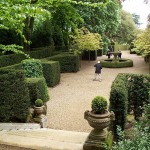
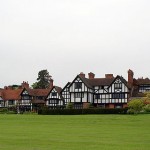
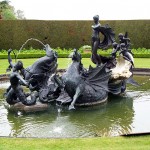
Boarstall Duck Decoy, Bucks
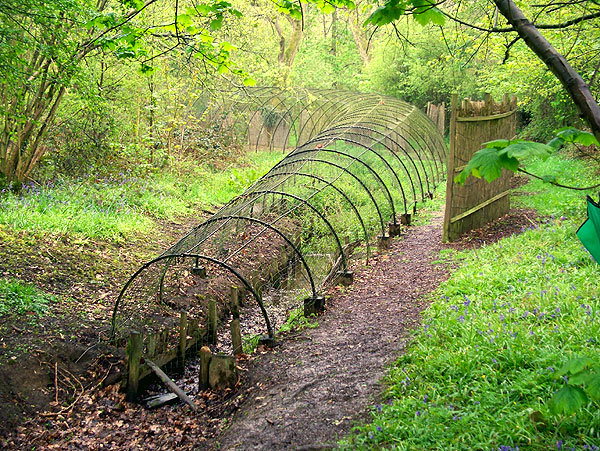
The second time, in May 2012, I was able to walk around the lake and see the curving funnel-shaped decoy nets placed over curving lake inlets.
Visiting dates are somewhat restricted.
Boarstall Tower, Bucks
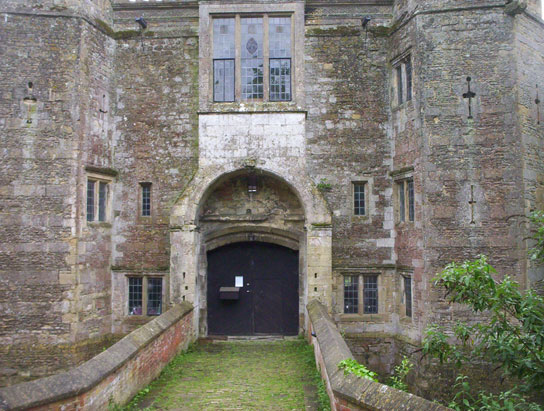
A 14th century moated gatehouse tower, once part of a fortified manor house. The tower is fairly small but quite interesting, and there are some views from the roof. The gardens are attractive.
Restricted opening – see NT guidebook or website. Worth a visit if you are in the area.
The Boarstall Duck decoy is nearby, and it’s possible to visit both the same afternoon.
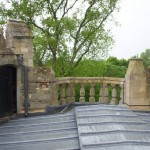
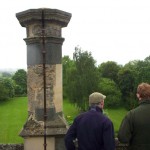
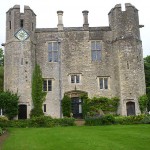
Boscastle, Devon
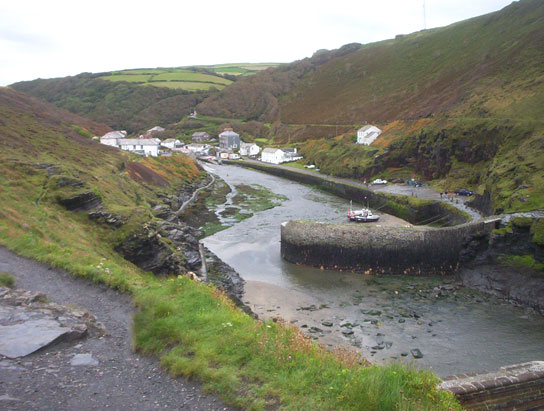
The village is of course famous for nearly becoming an ex-village during a disastrous flood a few years ago. At the village centre you can visit a small museum of the disaster and look at the new bridge and flood prevention works. It’s worth making an effort to tramp further afield, as there are interesting walks down to the harbour mouth (both sides), or if you can find a paper walk guide, you can walk around some hilly old streets looking at old buildings of interest. The harbour largely dries out at low tide.
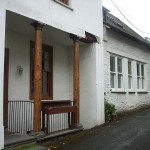
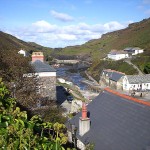
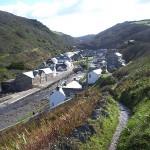
Branscombe Bakery, Manor Mill and Forge, Devon
The mill and forge are in working order, and teas are available in the Old Bakery. The thatched buildings are over 200 years old. The village is quite near to the sea coast. Worth a vsit if you are in the area. If I remember correctly, road access is narrow, twisty, hilly and potentially congested.
